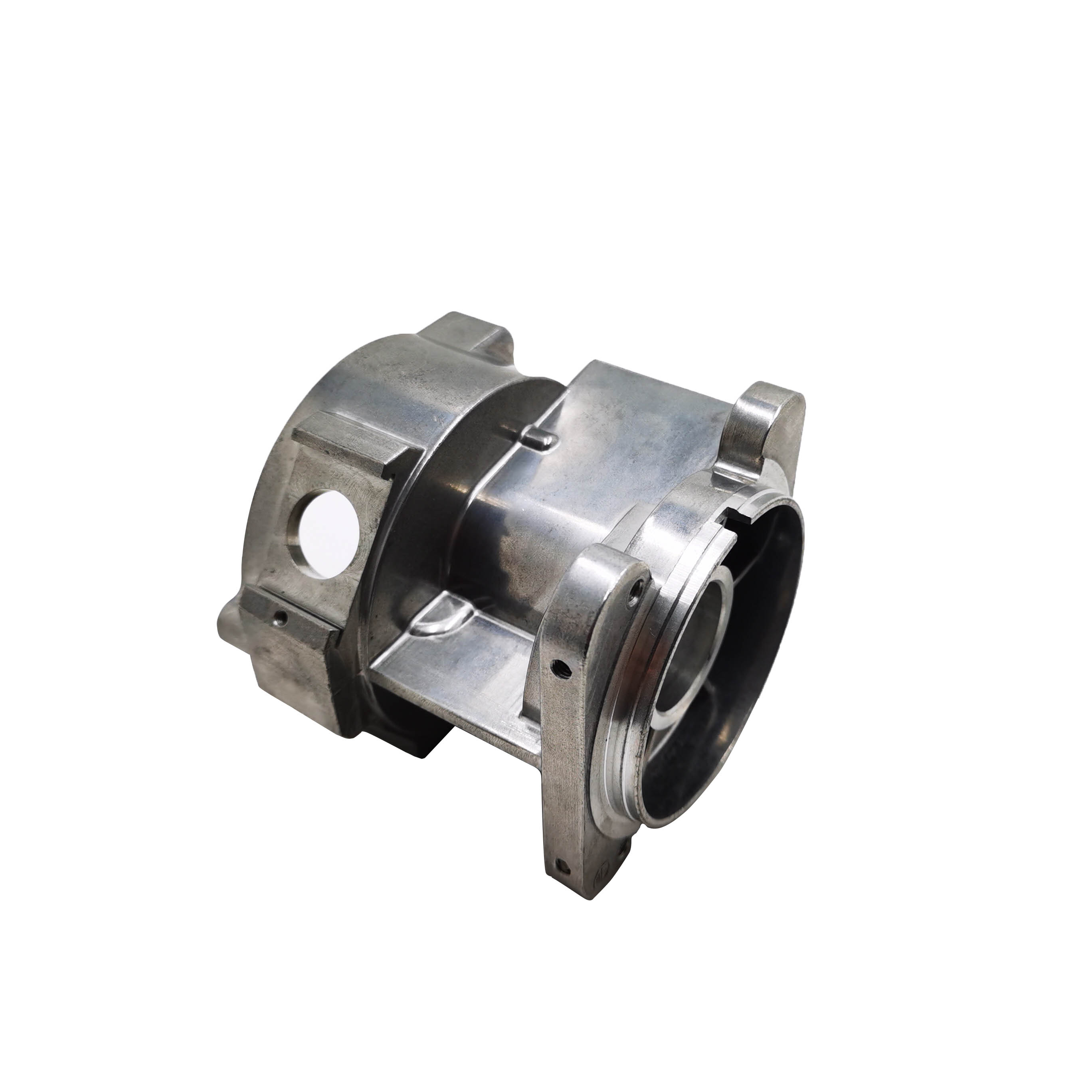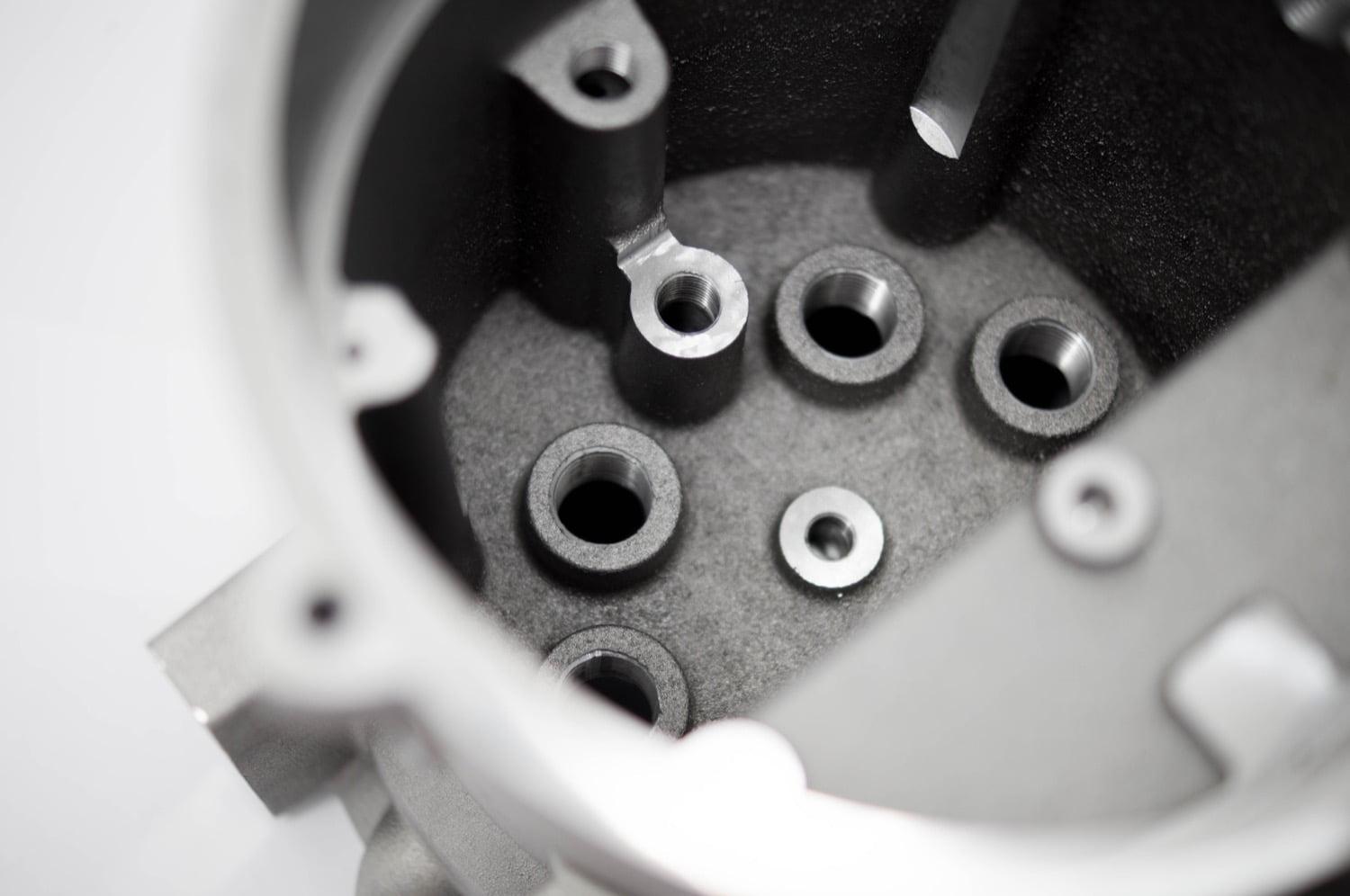Why many industries trust Precision aluminum casting for durable components
Exploring the Ingenious Processes Behind Modern Light Weight Aluminum Foundry Operations
Modern aluminum shop operations are going through considerable improvement. Automation and AI are reshaping production methods, improving both effectiveness and precision. The integration of 3D printing is simplifying mold development, while sustainability methods are ending up being more crucial. Each of these developments plays a crucial role in redefining the market. The implications of these adjustments extend beyond simple manufacturing effectiveness. What obstacles and possibilities exist in advance for aluminum factories in this evolving landscape?
The Role of Automation in Aluminum Foundries

Automation adds to boosted safety and security requirements within the factory setting. By moving unsafe tasks to devices, human workers can concentrate on supervisory duties and high quality control, decreasing the danger of mishaps. In enhancement, data analytics originated from automated procedures offer valuable understandings into functional efficiency, leading to much better decision-making and continual enhancement. As the demand for aluminum items expands, the fostering of automation innovations will likely expand, better transforming the landscape of light weight aluminum factory operations.
Innovations in Casting Technologies
Current advancements in casting modern technologies are transforming aluminum shop procedures. Technologies such as 3D printing combination, progressed alloy formulations, and automated procedure optimization are improving efficiency and product high quality. These developments are critical in satisfying the evolving needs of the industry.
3D Printing Assimilation
Integrating 3D printing technology right into light weight aluminum foundry operations has actually reinvented traditional casting methods, improving both efficiency and precision. This innovative method permits the fast manufacturing of intricate mold and mildews and cores, substantially minimizing preparations and material waste. By utilizing additive manufacturing, factories can produce detailed geometries that were formerly difficult or impossible to achieve with conventional methods. The versatility of 3D printing likewise allows quick design alterations, fostering an extra active production process. Furthermore, this assimilation sustains using light-weight frameworks, which is significantly important in markets such as auto and aerospace. As light weight aluminum factories remain to embrace 3D printing, they position themselves at the leading edge of technical innovation, driving renovations in product high quality and operational capacities.
Advanced Alloy Formulations
The advancement of sophisticated alloy formulas has actually substantially boosted casting innovations in light weight aluminum factory operations. These formulas integrate various elements, such as silicon, copper, and magnesium, to enhance mechanical properties and thermal resistance. By customizing the structure of aluminum alloys, manufacturers can achieve specific performance features that meet the demands of varied applications, from automobile components to aerospace structures. The usage of sophisticated alloys likewise contributes to lowered weight and increased stamina, which are essential consider modern-day engineering. Additionally, technologies in alloy development allow far better fluidness throughout spreading, resulting in enhanced surface area finishes and lowered issues. Generally, progressed alloy solutions stand for a substantial leap forward, positioning aluminum factories to meet the advancing demands of various markets effectively.
Automated Refine Optimization
Developments in casting innovations have led the method for automatic procedure improvement in aluminum foundry operations. By integrating innovative software application and real-time data analytics, shops can currently improve production procedures and enhance quality assurance. Automated systems keep track of variables such as air conditioning, temperature level, and pressure rates, enabling prompt modifications that reduce issues and waste. In addition, device learning formulas assess historical efficiency information to predict suitable setups, therefore boosting performance and decreasing cycle times. Robotics additionally play a considerable duty, dealing with repeated tasks that improve security and accuracy. On the whole, these advancements not only drive functional performance but also enable factories to meet the expanding demand for top quality aluminum parts in numerous sectors.
Smart Manufacturing and Sector 4.0 Integration
The integration of Smart Manufacturing and Industry 4.0 within light weight aluminum foundries is transforming operational efficiency. By leveraging IoT innovations, automation, and robotics, foundries can enhance manufacturing processes and lower downtime. In addition, information analytics offers important understandings that boost decision-making and drive continuous enhancement.
IoT in Factory Workflow
As manufacturers significantly welcome the Net of Points (IoT), factory procedures are experiencing a transformative change towards smart manufacturing and Industry 4.0 integration. Aluminum Foundry. IoT innovations make it possible for real-time data collection and analysis, improving decision-making procedures and functional effectiveness. Sensors and linked gadgets keep an eye on tools performance, product usage, and environmental conditions, permitting proactive upkeep and resource optimization. This connectivity cultivates a much more active production setting, where modifications can be made swiftly in action to market demands. Furthermore, IoT helps with boosted traceability and quality assurance, as information from the entire manufacturing cycle can be conveniently accessed and analyzed. Generally, the assimilation of IoT in factory procedures substantially improves productivity and drives development in aluminum production procedures
Automation and Robotics Assimilation
Automation and robotics combination is changing aluminum shop operations by improving performance and precision. This transformative approach improves processes such as molding, pouring, and ending up, minimizing human mistake and increasing result uniformity. By employing innovative robot systems, foundries can accomplish greater production prices while preserving strict quality requirements. Automated systems also enable real-time monitoring and adaptive control, permitting speedy changes to production parameters. Furthermore, the combination of robotics reduces labor prices and alleviates safety risks related to hands-on handling of liquified steel. As shops welcome clever manufacturing principles fundamental in Sector 4.0, the harmony between automation and robotics solidifies their one-upmanship, leading the way for lasting development and development in the aluminum casting field.
Data Analytics for Efficiency
Utilizing information analytics considerably enhances performance within aluminum factory procedures, lining up with smart manufacturing and Industry 4.0 concepts. By leveraging real-time official statement data collection and evaluation, shops can keep an eye on manufacturing procedures, forecast tools failings, and maximize source allowance. This data-driven technique facilitates insightful decision-making, making it possible for check my source managers to boost and identify bottlenecks operations. In addition, predictive analytics equips factories to expect market needs, thus lowering waste and making sure prompt item shipment. Assimilation of data analytics with IoT tools boosts operational visibility, fostering an aggressive upkeep society. Eventually, carrying out these sophisticated analytical methods not just enhances productivity however also drives development, placing aluminum foundries to fulfill the progressing needs of the sector while keeping one-upmanships in a swiftly altering landscape.
Lasting Practices in Aluminum Casting
While the aluminum casting sector has commonly dealt with environmental challenges, many factories are currently embracing sustainable methods to mitigate their impact (Precision aluminum casting). A substantial emphasis has actually been on reusing aluminum scrap, which not just minimizes waste however additionally saves power contrasted to primary aluminum production. Innovative melting modern technologies, such as induction furnaces, enhance power performance and lower greenhouse gas discharges
In addition, shops are executing closed-loop water systems to reduce water consumption and reduce thermal air pollution. Using eco-friendly binders in mold-making procedures is gaining grip, further lowering dangerous emissions.
Some centers are investing in eco-friendly power sources to power procedures, lining up with global sustainability goals. By incorporating these techniques, the light weight aluminum spreading market is progressing toward a much more environmentally liable future, demonstrating that financial growth can exist together with ecological stewardship - aluminum casting. These efforts mirror a dedication to sustainability and the value of environmental responsibility in production
Top Quality Control Innovations
As the aluminum casting market developments in the direction of sustainability, the importance of top quality control advancements becomes progressively evident. Modern light weight aluminum foundries are embracing sophisticated technologies to improve their high quality guarantee procedures. Strategies such as real-time tracking and data analytics allow manufacturers to identify flaws and inconsistencies early in the production cycle. Implementing automated inspection systems geared up with maker discovering formulas assurances that products satisfy stringent top quality standards while minimizing human mistake.
In addition, the combination of non-destructive testing approaches, such as ultrasonic and radiographic assessments, supplies much deeper insights right into the integrity of castings without harming the product. These technologies not just boost item dependability however likewise decrease waste, lining up with sustainability objectives. Furthermore, the adoption of standardized high quality frameworks assists improve operations across different foundries, assuring uniformity in result. Collectively, these improvements are reshaping quality assurance, cultivating a society of excellence within the light weight aluminum casting field.
Future Patterns in Light Weight Aluminum Factory Procedures
What advancements exist in advance for aluminum shop operations? The future of aluminum foundries is poised for Resources change through developments in automation, expert system, and lasting practices. The assimilation of robotics and automated systems is anticipated to enhance effectiveness and precision in the spreading processes, minimizing human mistake and labor prices. Furthermore, AI-driven analytics will enable real-time monitoring and anticipating upkeep, enhancing operational efficiency and lessening downtime.
Sustainability remains a centerpiece, with shops significantly embracing eco-friendly methods, such as using recycled aluminum and establishing low-emission melting technologies. Technologies in 3D printing are additionally prepared for to revolutionize mold-making, enabling complex geometries and decreased material waste. As the sector accepts digitalization, data-driven decision-making will certainly come to be crucial, making it possible for shops to react promptly to market demands. Collectively, these patterns guarantee to redefine aluminum factory procedures, making them extra effective, lasting, and adaptable to future difficulties.

Frequently Asked Questions
What Precaution Are Applied in Aluminum Shop Operations?
Aluminum shop procedures apply different precaution, consisting of personal protective tools, air flow systems to handle fumes, regular safety training, emergency response plans, and stringent surveillance of temperature level and tools to stop accidents and warranty employee safety.
How Do Shops Handle Workforce Educating for New Technologies?

What Products Are Typically Recycled in Light Weight Aluminum Foundries?
Light weight aluminum foundries generally recycle scrap aluminum, consisting of post-consumer products like beverage cans, automobile parts, and building products. This recycling process reduces waste and conserves sources, contributing to a much more lasting aluminum production industry.
How Does Light Weight Aluminum Spreading Effect the Setting?
Aluminum casting impacts the environment with energy-intensive processes, greenhouse gas exhausts, and potential local air pollution. Nonetheless, improvements in reusing and lasting techniques can alleviate these effects, promoting a much more green technique to aluminum manufacturing.
What Are the Typical Lead Times for Light Weight Aluminum Spreading Projects?
Normal preparation for light weight aluminum spreading projects differ considerably, normally ranging from 2 to six weeks. Aspects affecting these timelines include intricacy, order size, and material schedule, impacting total production routines in shop operations.
Automation increasingly plays an essential function in light weight aluminum foundries, enhancing performance and accuracy in the manufacturing process. Developments in casting modern technologies have paved the means for computerized process improvement in light weight aluminum factory procedures. Harnessing data analytics substantially improves efficiency within aluminum foundry operations, lining up with smart manufacturing and Sector 4.0 principles. A considerable emphasis has been on recycling aluminum scrap, which not just reduces waste but also saves energy compared to main light weight aluminum production. Light weight aluminum foundries typically reuse scrap aluminum, consisting of post-consumer products like beverage canisters, vehicle components, and construction products.